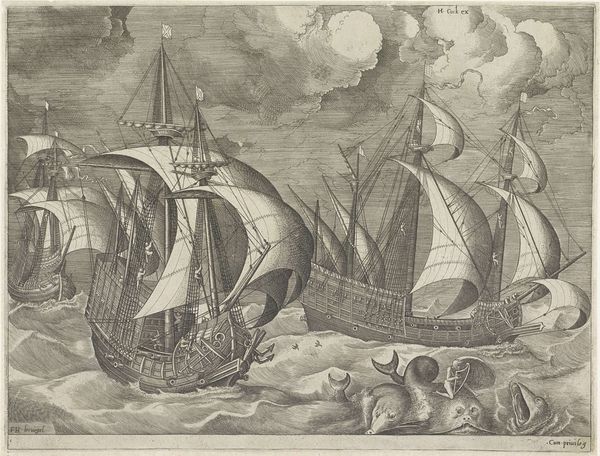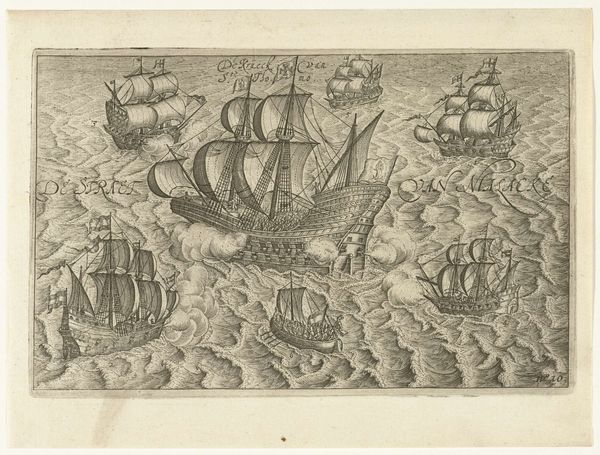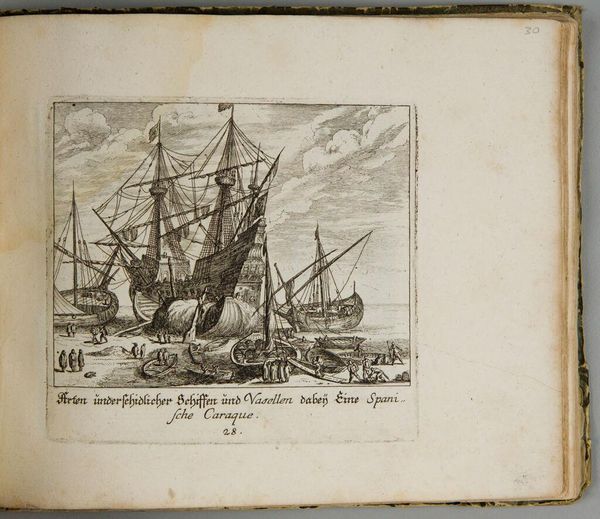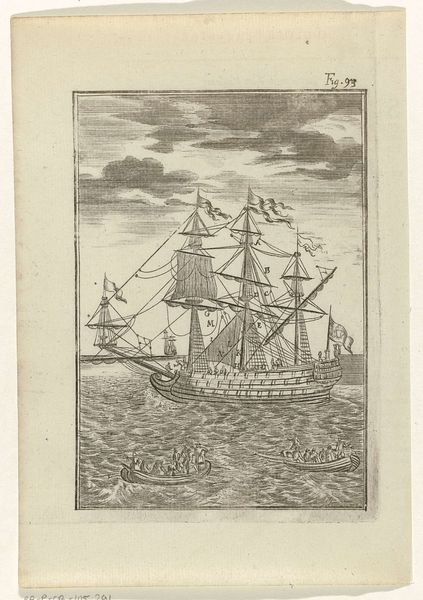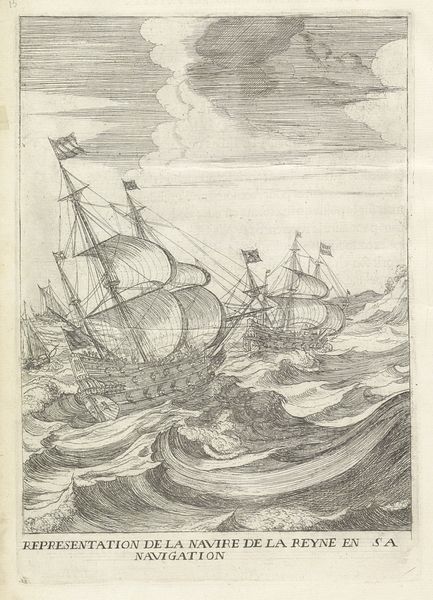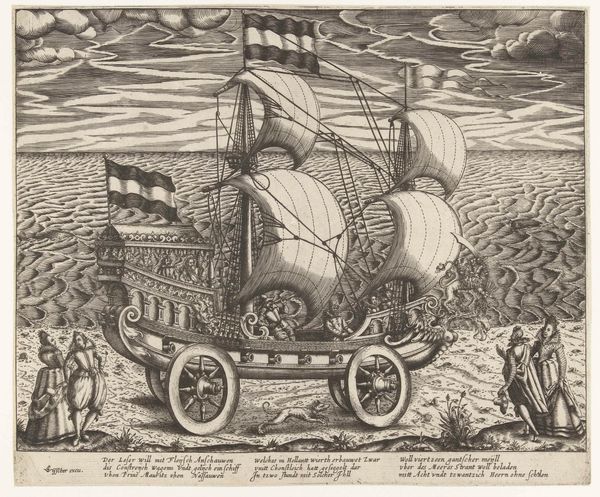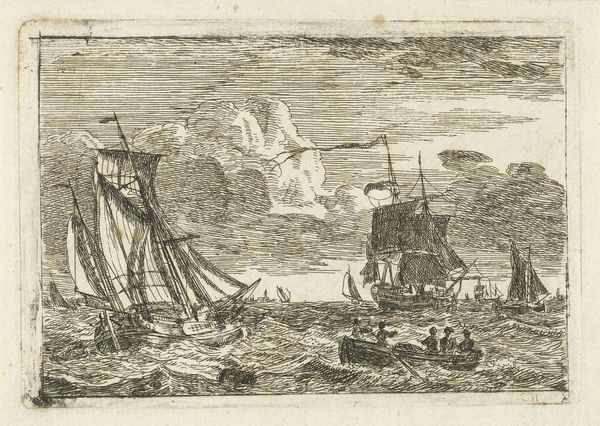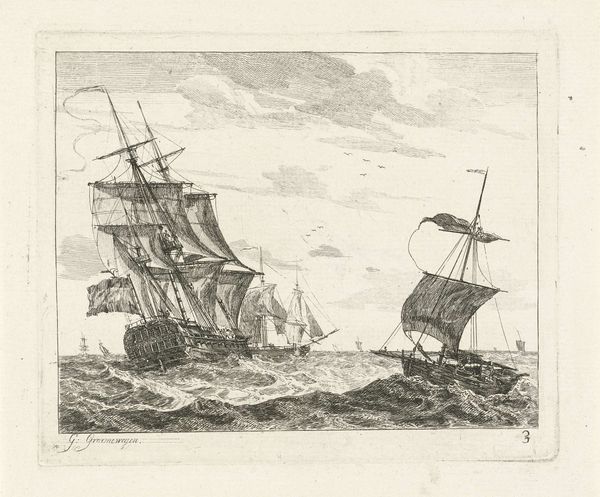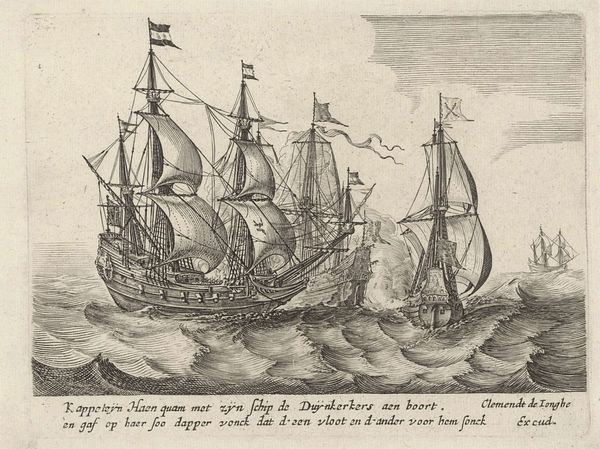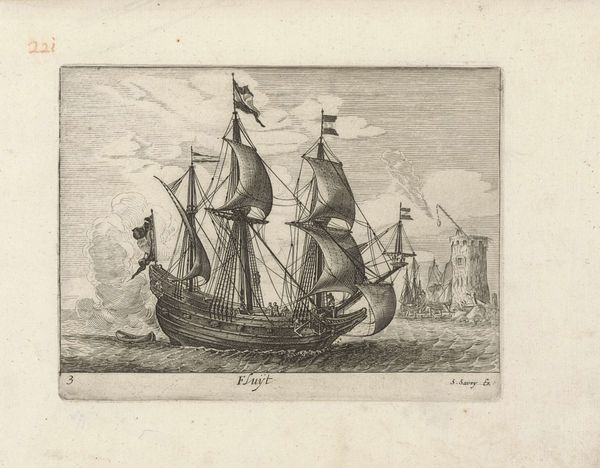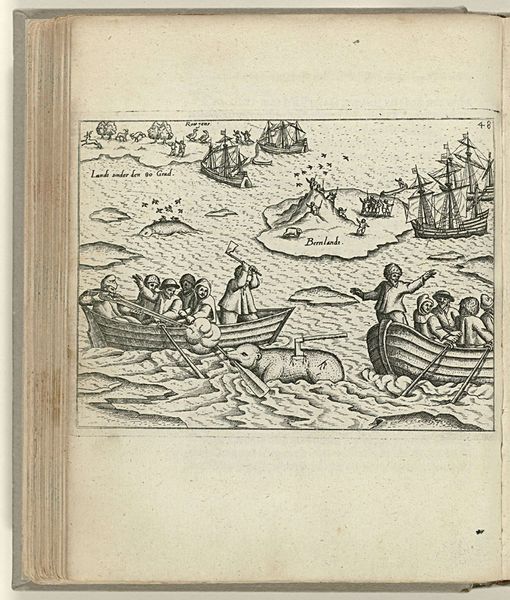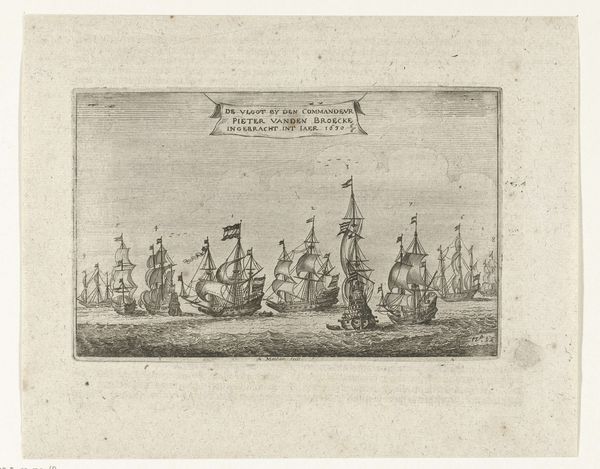
print, engraving
# print
#
figuration
#
line
#
genre-painting
#
northern-renaissance
#
engraving
Dimensions: height 315 mm, width 200 mm
Copyright: Rijks Museum: Open Domain
Editor: So, this is "Praalwagen met zeilschip, 1594," a print, an engraving to be exact, by Pieter van der Borcht the First, dating back to the late 16th century. It looks like it's part of a book in the Rijksmuseum. I am struck by the ship, rendered with such detailed lines but floating rather precariously above all this chaotic sea! What exactly are we looking at? Curator: This is an image teeming with social and political context. These elaborate floats, or “praalwagens,” were temporary structures created for celebratory events, often tied to royal entries or political allegiances. Van der Borcht's engraving captures one such spectacle, transforming it into a lasting visual document. This wasn’t just about artistry; it was about power and propaganda. Editor: Propaganda, really? How so? Curator: Consider who might commission and disseminate such imagery. The ship, richly adorned, likely symbolizes a particular region or ruler, possibly highlighting naval strength and commercial prowess. The scene below, figures struggling in the waves, could represent the challenges overcome or the rivals subdued. What inscriptions are visible on the ship's hull? Editor: I think I can make out "Ernest DUX Imperii". Curator: Precisely! "Ernest, Duke of the Empire." That solidifies our understanding of its socio-political role: The artwork could then act as a way to assert control and broadcast triumphs and create an environment around authority. The Rijksmuseum holds it now, changing its original context from propaganda to artistic representation of history. Editor: So it's not just a pretty ship, it's a floating political statement? That really makes me rethink the print. Seeing how displays like this play into political narratives gives me an appreciation for it, not just as artwork, but as artifact. Curator: Exactly. That’s where history truly illuminates the artwork and art illuminates history.
Comments
No comments
Be the first to comment and join the conversation on the ultimate creative platform.
